Space the Librarian Frontier - ALA 2013

The things I brought back from ALA that weren’t related to:
Space Geek Swag
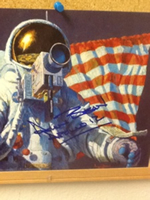
Calories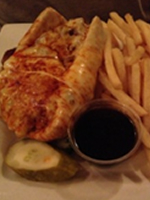
Touristy Photo Ops
170 librarians on a 5K run/walk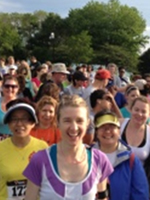
Dystopian Authors are funnier than you’d think they’d be.
Lowis Lowery, Cory Doctorow, Veronica Roth and Patrick Ness
Despite the darkness that can be found in Dystopia these authors were anything but dark, well there was that 10 minute monologue by Cory Doctorow that involved robots and mind control and how it’s not paranoia if they really are out to get you, but I’m sure that was more to illustrate a point than any real conspiracy theories that may or may not have been the basis for some of his writing.
Teens like Dystopia despite what adults have to say about its theme, its writing style, or its worth in the literature time line.
- Dystopias usually have a central authoritative figure who seeks to control or destroy the main characters of a story
- Dystopias usually have arbitrary rules that may or may not make sense but are rarely explained in a way that makes sense to the main characters of a story
- Dystopias usually have groups of peers who either seek you out to rally and support you no matter what even if it kills them or seek you out to utterly and completely destroy you and then humiliate you and then maybe destroy everything you love just for good measure.
Teens like Dystopia because it’s basically High School.
As one author put it if he had to read one more book about a bully with a heart of gold where everyone ends of best friends in the end he was going to literally scream. Real life was not like that and the books of the time were all about that theme. He asked how many readers started reading adult books just to get away from what was traditionally “young adult” literature. There were hundreds of hands. Teens want to read what they know or feel. Teens like Dystopia because it’s often the opposite of their own (or in this case the author’s own) insecurities and fears.
Which is how Lois Lowery wrote one of the first Dystopia’s but wasn’t really writing Dystopia she was writing about her youth growing up on military bases where people really did go around and write you up if you left your washing hanging on the line past 3pm. It seemed like another world.
Genre: Great for shelving but maybe not for Reader’s Advisory
Laura Lippman, Margaret Dilloway, and Naomi Novik
All three authors spoke on their entry into the publishing world and how they were ‘genre’ based early on, but that even though they read what they wrote they relied more on word of mouth then genre browsing for some of their favorite reads.
None of them thought that genres should be eliminated but today a true classification is hard to find. Romance or suspense, erotica or love story, science fiction or urban fantasy, police procedural or mystery. All of the classic book genres have begun migrating, intermixing and forming new hybrids of storylines.
A lot of this was a true discussion panel with the authors and audience where many people also felt that genre may have served its purpose but it’s not a be all and end all for classification.
Space the Librarian Frontier
Not a management seminar as I first thought this was actually a discussion about actual library space, Desks and offices and the use of interactive white boards.
A study was used in the first part that showed while library use grew the actual building of libraries and enlargement of dedicated space was stagnant. This panel of consultants, architects and a furniture designer was about new paradigms being introduced in a way that is changing the concept of how libraries work.
One speaker summed up by expressing her observation that as a public service industry, libraries had a disproportionate amount of introverts. While in the academic library or research model this might be an advantage, the key word in librarianship today is Collaborative Space.
There were a few ideas that were interesting in theory, but maybe not so much in practice. Like randomly assigned offices. All offices were assigned by a lottery draw. You picked a blind tab and you were assigned a location, in any part of the facility and your pod mates, office neighbors, desk sharers were picked the same way. Or due to the high dependence on mobile technology there were no offices, heck in one instance there was only this.
That might be the extreme but they brought up some key concepts that do now influence how work space should and is being designed.
- Moving from a Factory mind set to a Laboratory mindset
- More Team, less solo
- More multi-disciplinary, less single department
- More iterative, less linear
- More transparent, less opaque (my favorite those are white boards that any given project is placed on and as people walk by they can leave notes or ideas or opinions)
- More spontaneous, less scripted
- Person to Person interaction
- Connected
- The workspace of the future should have 4 elements:
- Desk Space
- Personal Space
- Private Space
- Collaborative Space.
The whole point of the random office assignments or lack of cubicle walls or small intimate group seating was to encourage others to see any problem or request in relationship to all the departments.
Many of the new designs coming out of current work space technology is being built to facilitate communication and to bring in other departments that might have a fresh outlook or a different perspective to any problem.
The rest of it
- One photo op with Alan Bean, Lunar Module Pilot of Apollo 12.
- $26 in shipping fees for ARCs, T-shirts, Tote bags and Pencils/Pens
- Dinosaur bones and bonus Mummies
- Steak, hotdogs, deep dish pizza, and noodles with tofu and enough heat to make a jalapeño jealous
- Public Transportation that was not only on time, cheap and easy to use but didn’t smell like gym socks
- And a sneak peak at the Graphic Novel full color pages for a Rick Riordan book
- A really lame panel on cross generational customers and privacy (the panel was made up entirely of high school students)
- And a mobile librarianship discussion that I probably should have had a degree in Code to attend but was still pretty interesting if you’re in to reactive design or the use of apps in Libraries.
Teresa Matthews is a Librarian at the Edmond Library. She has been a part of the MLS family for nearly 10 years. She can be reached at [email protected].
- Log in to post comments

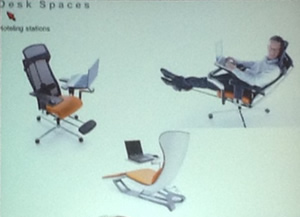
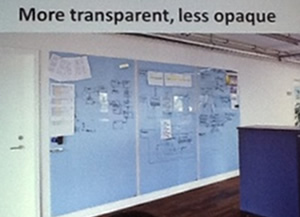
Comments
You packed a lot into a small amount of time! I like the idea of the interactive office space. I mourn the loss of privacy at times, but perhaps we are just ahead of the curve a little with our collaborative space. We even have a new white board in the back room to promote better communication among library aides. Thanks for riding the El train with us to the airport.
I enjoyed your entertaining
review of workshops attended.
Sounds like you had a good time.